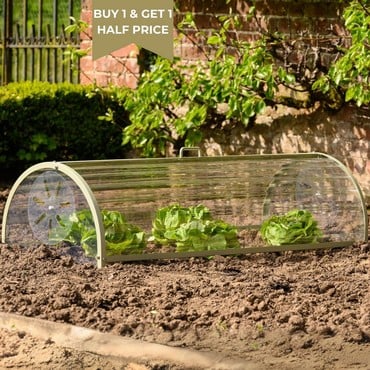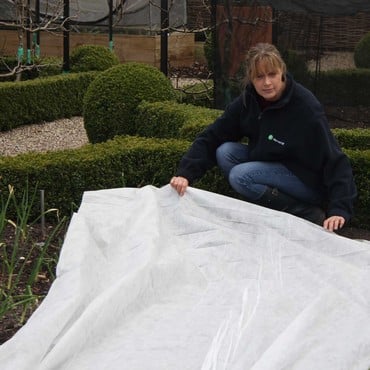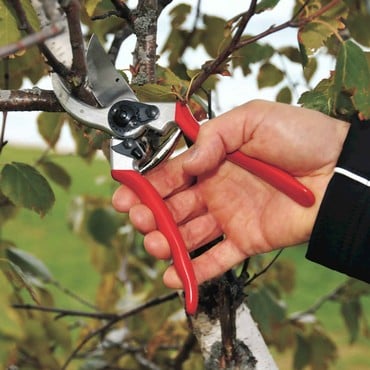The days are getting colder and the trees are shedding their leaves (continuously), but this is no time to let your veggie patch deteriorate. Though you should be reaping the rewards of an abundant harvest from the warmer months, sometimes we just long for something fresh and crunchy. Luckily, there is an abundance of wonderful vegetables that can help keep your kitchen stocked with tasty produce throughout the winter months.
Winter in the vegetable patch
Regardless of where you live, there are a few crops you can count on to withstand cooler temps, frost and even sometimes snow. Cool weather crops are, as a rule, leafy greens and roots. Vegetables that produce fruit like tomatoes and squash need lots of warmth and sunlight and are not really suited to cool-season gardening.
Brussels sprouts: Loved by some and hated by many, brussels sprouts are arguably the hardiest of vegetables; or at least among the cabbage family to which they belong. Going through a frost will enhance the sweetness and flavour of the crop.
Kale: Like sprouts, the flavour of kale can be enhanced with a touch of frost. They require a lot of moisture, so water regularly. Plants can be left in the ground and picked as required for hearty soups and stews.
Spinach: Spinach is one of the most satisfying cool-weather crops to grow, producing large yields of vitamin-rich, dark green leaves that are excellent for salads and cooking. Providing temperatures are right, you’ll have enough leaves to take you right through to spring.
Peas: These little green orbs can withstand freezing temperatures and favour mild to cooler conditions. The nutrient-packed vegetable is a great plant to place in your winter garden.
Spring onions: A delicious addition to any tasty winter salad, springs onions are very quick and easy to grow. Most variants of this crop are pretty hardy to winter conditions, but the White Lisbon variety is particularly hardy.
In the greenhouse…
There are plenty of plants you can grow in the greenhouse in winter, and while they won’t grow as fast as they would in the warmer months, they’ll still flourish with a little protection from the elements.
Potatoes: The perfect winter ingredient, you can grow potatoes in grow sacks or a large bucket/flowerpot. Potatoes can be susceptible to frost, so be sure to keep your greenhouse warm if the temperature drops significantly.
Carrots: When grown in a greenhouse, a quickly growing variety of carrot such as the Adelaide can be sown in December and ready to harvest in Spring.
Pak Choi: This delicious, oriental vegetable is a great addition to stir-fried dishes. It’s packed full of nutritious vitamins and relatively fast to grow.
Winter lettuce: For the salad lovers, there are a few types of lettuce that prefer cooler temperatures. Little gem, rocket and lamb’s lettuce are all good. They are quick growers, so harvest as and when large leaves appear. Lettuce tastes its best when grown in cool weather.
Protection
Keeping your winter vegetables sheltered and warm as the temperatures plummet is vital and there’s plenty of crop protection to choose from to suit your garden and patch.
Fleecing
Horticultural fleece works by trapping warm air around crops while stopping frost from getting in. Simply roll out your fleece across or around crops you want to protect and secure with stakes, staples or even large stones. Just make sure there are no gaps where cold air can sneak in.
Bubble wrap
Bubble wrap insulation can protect plants from freezing weather and extend the growing season in an unheated greenhouse. It will also work at retaining heat in a heated greenhouse. This will reduce the amount of heat you need to provide, saving you money and protecting the environment.
Cloches
Essentially a cloche keep crops and the soil around them warm. They successfully protect plants from cold weather and are hardier than fleece. Cloches should be removed once the harsh weather has passed as leaving them on too long can encourage disease.
Elsewhere in the garden
Winter is also a great time for gardeners to tidy, protect plants and plan ahead. Here’s our list of other gardening tasks to complete over the winter period:
Tidy up
Whether its clearing leaves, dead-heading autumn flowers, or cleaning and fixing your tools – there’s always tidying to do during the winter months.
Look after your grass
Avoid walking on dormant winter grass or you could damage it fairly easily.
Protect the wildlife
Birds will appreciate extra nuts and seeds, while hedgehogs will make a home out of piles of fallen leaves.
Plan
Devote some time to planning what you will do with your garden in the coming year. What seeds will you need to order? What, if anything, will you do differently?































